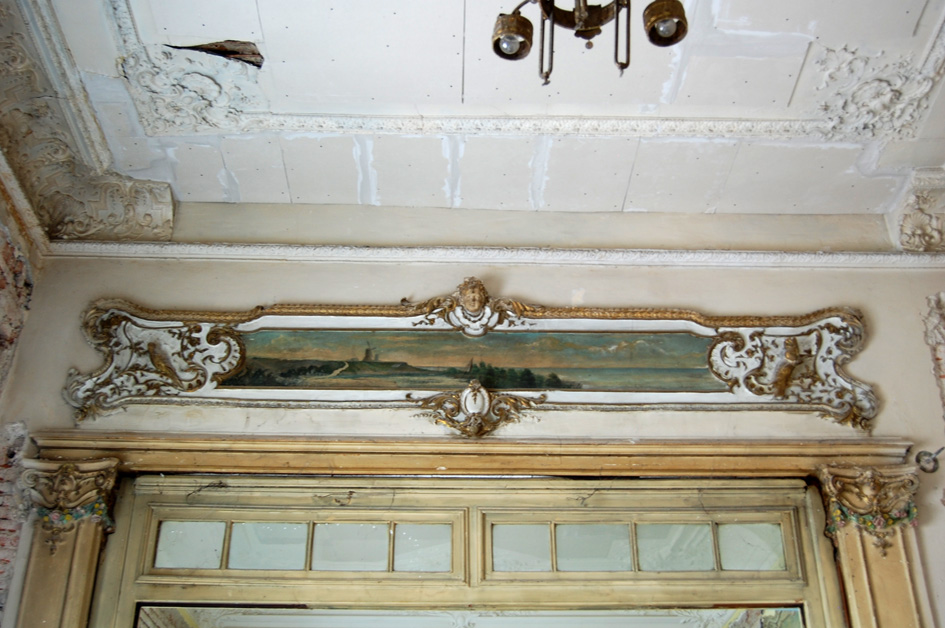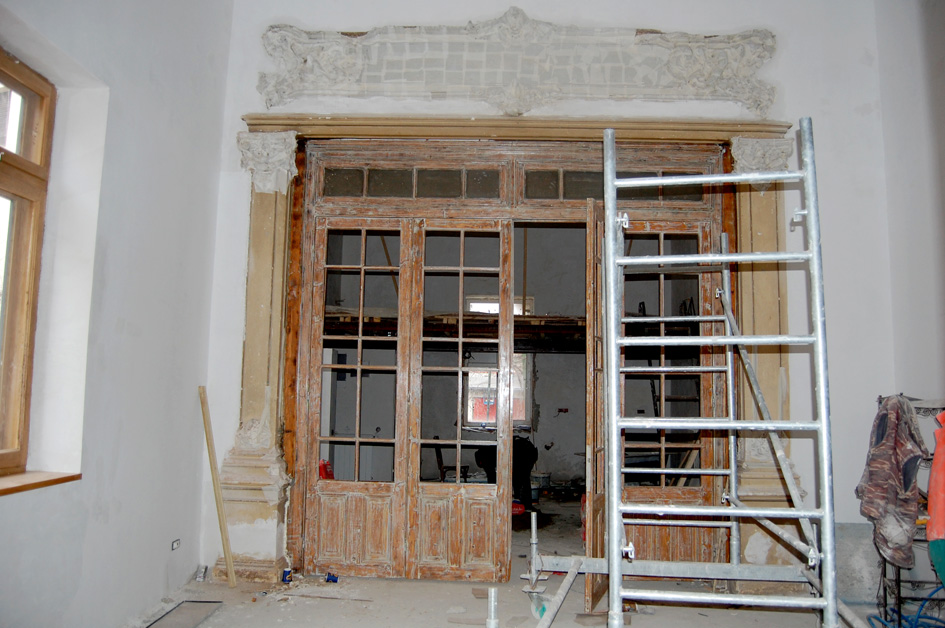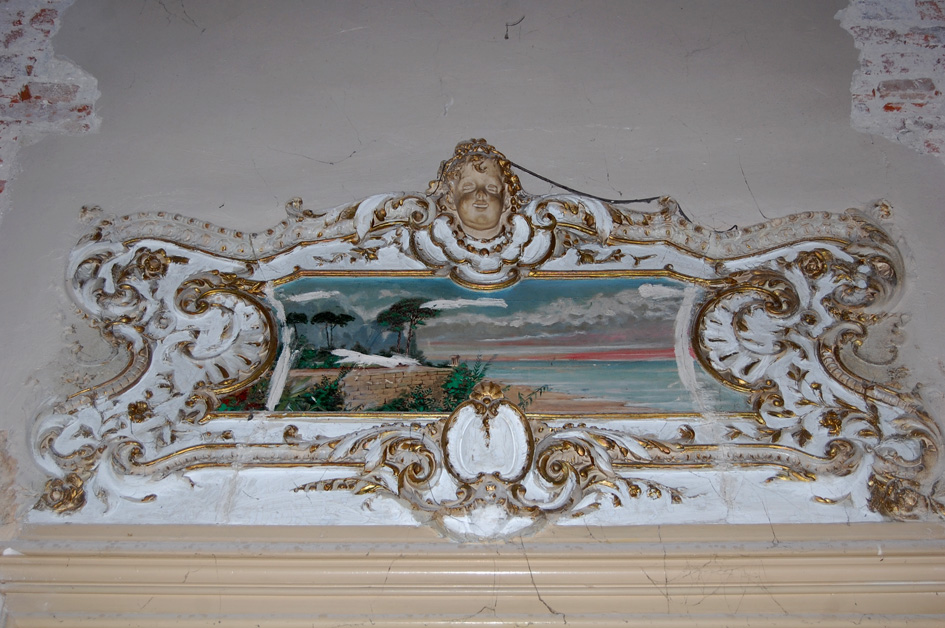The best-known rules of intervention on the built heritage were synthesized a little over 50 years ago, in the document called the Charter of Venice. One of the articles brings one of the most important rules, that all development stages of a monument are relevant. Thus, in article 11, among others, this statement is made:
"When a building comprises overlapping stages, the removal of a historic layer to expose the one below can only be justified in exceptional circumstances, when what is being removed is of little interest while the material being revealed is of interest superior from a historical, archaeological or aesthetic point of view and is in a sufficiently good state of preservation to warrant such an action".
A perfect case for illustrating the difficulties of making such a decision to remove a layer to the detriment of the one on top of which it overlaps can be found in the house of Aristomene Fotino, in its two-room salon. What initially seemed to be a unitary work turned out to be a twinning of two distinct stages, one in which the two cells of the salon seem to have functioned unseparated and a second in which, through the introduction of a glasvand (1).
Today, such an operation of physical division of the space would probably be done with different details when the owner-architect tandem would care about maintaining the authenticity of such a building (2). At the moment of removing the lining of the frame of this glasvand in order to clean the carpentry and the adjacent stucco, what could be suspected became even clearer (3).
The continuity of the decorative relief of the pilasters that ends the masonry backs between which the carpentry panel was mounted was exposed, which led to the sure possible conclusion, that initially the space must have been an open one, without that glasvand that we see today. Here comes the difficulty of making a restoration decision: to return to the originally intended situation and leave the pilasters free and the uninterrupted continuity of the space with two cells, or to keep the joinery added at an unknown but sufficiently distant date and thus lose part of the original meaning of the building?
This decision is almost impossible to make in the absence of additional historical information, as we have neither the original plans, nor vintage photographs, nor any other descriptions of how this saloon functioned or how and why it was decided to separate it with a glasvand. And the application of Article 11 of the Charter of Venice is also difficult because, obviously, the previous stage is also relevant and well preserved (4), but the quality and age of the carpentry of the second stage cannot be considered inferior (5) . In this case it can be said that the first part of that article applies fully, which says:
"The valuable contribution of each period of a building must be respected considering that the goal of restoration is not to obtain a unity of style".
This is how the intervention on a house like his house Arisomene Fotino, a house that is not among the classified historical monuments, can generate dilemmas for an owner concerned with passing on to future generations an authentic and unaltered cultural heritage!
Images
The image of the carpentry panel inserted at an unknown date as it looked immediately after the purchase of the house (a), at the beginning of the consolidation efforts (b) and during them (c).



A door in a similar situation, solved in a contemporary manner. Obviously, an "exclusive" solution, because the cutting of a glass panel that had to be reinforced and secured in order not to endanger the guests of a luxury hotel is an expensive operation, which requires both precision and craftsmanship.

Image of the beginning of the paint stripping operation which highlighted that this was a lining over the stucco decorations and not stucco decorations applied over the frame/lining of the joinery. The continuity of the paint layers can mask this detail.
Uncovering the lining revealed the good condition of the stucco covered at an unknown time. In order to avoid the degradation of the decorative reliefs due to interventions, it was decided to temporarily protect them with polyurethane foam (a, b, c).



The age, patina and value of the pieces was equivalent, which, after the discovery of the distinct stages, unknown in the first instance, generated the dilemma of deciding the direction to follow, taking into account the principles enunciated in art. 11 of the Venice Charter.



